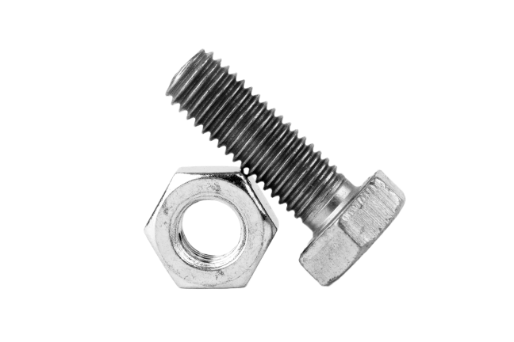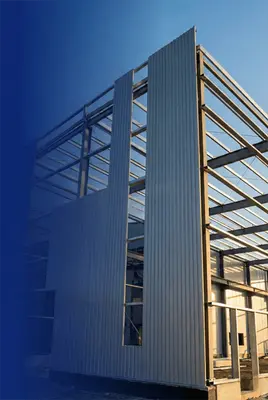
Are you trying to improve the energy efficiency of your home? Gaining knowledge about vapor barriers and their effective use is important. Knowing how to secure the open edges of the vapor barrier using caulk is also important.
This article will discuss the main concepts surrounding vapor barriers, and give valuable suggestions about the most suitable caulk varieties.
Understanding Vapor Barriers
A vapor barrier is a critical part of a home's insulation system, because it combats the problems caused by invading air and the moisture associated with it, from condensation between warm and cold environments. Its primary purpose is to block airflow completely to reduce heating and cooling costs. However, for a vapor barrier to function effectively, it must be installed without holes or seams, because any gaps can negate its effectiveness.
Importance of Vapor Barriers in Energy Efficiency
A vapor barrier works by creating a barrier that stops air and moisture from passing through. It's usually installed on the warm side of insulation in a climate-controlled area, like inside a house. When warm air, which carries moisture, meets a cool surface like an exterior wall, it cools down and can't hold moisture anymore, which causes condensation. This can lead to structural damage and mold growth.
A well-installed vapor barrier prevents this issue by blocking the warm, moist air from reaching cool surfaces, and stopping condensation and its problems. It's essential to ensure that the vapor barrier is correctly caulked to maintain its effectiveness. The following sections will guide you on how to caulk your vapor barrier using the appropriate vapor barrier caulk.
Building Codes and Regulations
When installing and caulking a vapor barrier, it's vital to be aware of the local building codes and regulations. The requirements vary by region and may dictate specifications such as the type of vapor barrier caulk to use, the installation method, and the locations in which a vapor barrier is necessary. In general, building codes mandate the use of vapor barriers in areas prone to high humidity levels or drastic temperature changes.
Remember, the key to an effective vapor barrier is proper installation and caulking with the right vapor barrier caulk.
Necessary Tools and Materials
To seal a vapor barrier seam with caulk, you will need the following tools and materials:
Polyurethane caulk or acoustical sealant
Caulk gun
Utility knife
Staple gun
Staples
Vapor barrier material (as needed)
Tape measure
Steps to Caulk a Vapor Barrier
Here's a simple, step-by-step guide on how to caulk a vapor barrier effectively using the correct type of vapor barrier caulk.
- Preparation: Spread out the vapor barrier material and measure it to fit the area to insulate. Use a utility knife to cut the material to the needed dimensions.
- Application: Place the vapor barrier caulk in the caulk gun. Cut the tip of the caulk tube at a 45-degree angle and puncture the inner seal using the rod on the caulk gun.
- Sealing: Run a bead of caulk along the seams of the vapor barrier. The bead should be continuous and unbroken to ensure a complete seal. Apply the caulk to all edges and seams where the vapor barrier material meets the wall or floor.
After you have successfully installed and caulked your vapor barrier, you will notice a significant increase in your home's energy efficiency. Now that we have guided you through the process, it's time to take action and get the tools you need.
Choosing the Right Caulk for Vapor Barriers
When selecting caulk for vapor barriers, it's important to consider several factors. Ideally, opt for types that can form a flexible, long-lasting, and airtight seal.
Polyurethane Caulk
Polyurethane caulk is a great option for vapor barriers. It's flexible, durable, and can handle extreme weather and temperature changes. These qualities are crucial for keeping the vapor barrier intact.
Acoustical Sealant
Acoustical sealant, on the other hand, is specifically designed to create airtight seals and is often used in soundproofing applications. It remains flexible even after curing, which makes it an ideal choice for sealing vapor barriers.
Butyl Rubber Caulk
Butyl rubber caulk is another viable option. Known for its superior water resistance and adherence to most materials, it's perfect for sealing areas exposed to high moisture levels.
Remember, the key to choosing the right vapor barrier caulk is to consider the specific conditions of your home. Factors like climate, humidity levels, and the type of insulation, can greatly influence which caulk will work best.
Factors to Consider When Selecting Caulk for Vapor Barriers
When selecting caulk for your vapor barrier, it’s important to consider these key factors:
- Material Compatibility: Ensure the caulk you choose is compatible with the material of your vapor barrier. Polyurethane caulk, acoustical sealant, and butyl rubber caulk are usually compatible with most materials.
- Durability: The caulk should have strong adherence and longevity. It must withstand extreme weather conditions and temperature fluctuations, to maintain the vapor barrier's integrity.
- Moisture Resistance: Given the role of a vapor barrier, the caulk must exhibit excellent water resistance. This prevents moisture from seeping in, to reduce the risk of mold growth and structural damage.
- Flexibility: A good caulk remains flexible even after it has cured. This allows it to accommodate minor shifts in the building structure without breaking the seal.
- Application Conditions: Consider the environment in which the caulk will be applied. Some products require certain temperature and humidity levels to cure properly.
The right product, when applied correctly, can significantly enhance the performance and longevity of your home's insulation system.
Secure Your Vapor Barrier with Fastener Systems Inc. Caulk
For a successful vapor barrier installation, you need a reliable and high-quality vapor barrier caulk. Look no further than Fastener Systems Inc.. Our selection of caulks ensures a firm and durable seal, to help protect your home from air and moisture infiltration. Don't risk the integrity of your insulation system with subpar products, make us your trusted partner in home insulation solutions.
Contact us today for more information!

